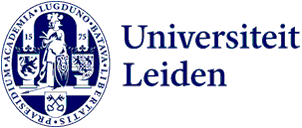
Medieval Oegstgeest did business with all of Europe
Generations of Leiden students and academics have done archaeological research into the early medieval history of Oegstgeest. This makes this old settlement one of the best-documented sites from that era. In a new book Leiden researchers take stock.
Stand on the roof of the Leiden University archaeology building on a clear day and to the north-west you’ll see the village of Oegstgeest. There, at a stone’s throw from the faculty, a small village with around six houses once stood in the Early Middle Ages. Between around 550 and 725 AD, around 60 people usually lived there, in a constant battle with the rising water.

Now there is a book. In the weighty Oegstgeest, a riverine settlement in the early medieval world system, researchers Corrie Bakels, Frans Theuws and Jasper de Bruin show what we know so far about the settlement. The book was presented to the mayor of Oegstgeest on 8 June and demonstrates the knowledge produced by years of research. Much of the research was conducted by students and researchers from Leiden University. It has made Oegstgeest one of the best-documented settlements from this period.
It soon became clear that Oegstgeest’s tiny ancestor was no sleepy backwater, but was instead in contact with the big wide world. The indubitable highlight of the collection is a silver bowl decorated in gold leaf with beautiful mythical creatures. The bowl is made up of sections that came from near and far: the bowl itself comes from the Mediterranean, its base and rings come from the Rhineland and the suspension rings follow an English tradition.
The people didn’t all come from the area either. An excavated child proved to have come from England, and a few adults weren’t from the immediate vicinity at least. And the pigs? They were sometimes fetched from Germany. The archaeologists discovered all of this by studying tooth enamel because this can tell you whether someone consumed a typical regional diet.

Oegstgeest thus did what many an archaeological site has done: shatter your preconceived notions. Because whereas this period is still sometimes referred to as the ‘the Dark Ages’ in the vernacular, the site proves once again that even a small Dutch village was part of an economic system that extended over hundreds of kilometres. Life in settlement was undoubtedly hard, but the citizens of Medieval Oegstgeest were in some respects citizens of the world.
Emeritus professor Corrie Bakels – one of the book’s authors – was also a regular visitor to the excavation in Oegstgeest. She studied soil samples from the former wells. ‘Among my finds were fig seeds that must have come from the Mediterranean. This is also an indication that there was a lot of long-distance trade. Although my seeds made less of an impression than that silver bowl!’
Text: Merijn van Nuland
Oegstgeest as training ground for Leiden archaeologists
Generations of students have had their first experiences of fieldwork in Oegstgeest. In total almost 500 first-years have helped with not only the digs but also describing, analysing and interpreting the finds. Thanks to numerous theses and dissertations, the secrets of the settlement have gradually been revealed. Bakels: ‘It’s a fantastic example of how research and teaching can be integrated, which is what we like to see in Leiden.’
